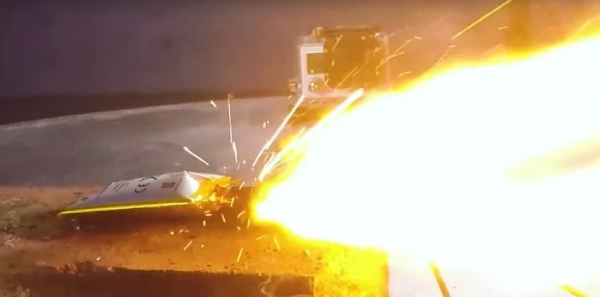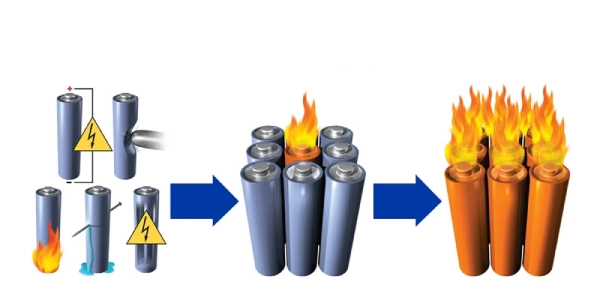The inherent reason for the unsafety of lithium polymer batteries is thermal runaway inside the battery. The constant accumulation of heat causes the internal temperature of the lithium polymer battery to continue to rise. Its external manifestations are violent energy-release phenomena such as combustion and explosion.

Part 1. Are lithium polymer batteries safe?
Batteries are high-density carriers of energy and are inherently unsafe. The higher the energy density of an object, the greater the impact when its energy is released violently and the more prominent the safety issues. High-energy carriers such as gasoline, natural gas, and acetylene also have the same problem; countless safety accidents occur yearly.
Part 2. Factors affecting the safety of lipo batteries
Different electrochemical systems, capacities, process parameters, usage environment, usage degree, etc., all greatly impact lipo batteries’ safety.
Since lithium-ion batteries store energy, during the energy release process, when the battery heat appears and accumulates faster than the heat dissipation speed, the internal temperature of the battery will continue to rise. Lithium batteries are composed of highly active cathode materials and organic electrolytes, which are very prone to violent chemical side reactions under heated conditions. This reaction will generate a lot of heat and even lead to “thermal runaway,” which is an important cause of dangerous battery accidents.

Thermal runaway inside the lithium polymer battery shows that some chemical reactions are no longer the “controllable” and “orderly” we expected. Instead, it presents an uncontrollable and disordered state, leading to a rapid and violent release of energy.
Let’s look at some chemical reactions accompanied by a large amount of heat, leading to thermal runaway.
1.SEI membrane decomposes, and electrolyte exothermic side reaction
The solid electrolyte membrane is formed during the initial cycle of the lithium polymer battery. We neither want the SEI film to be too thick nor do we want it to be completely absent. The existence of a reasonable SEI film can protect the cathode active material and prevent it from reacting with the electrolyte.
However, when the internal temperature of the battery reaches about 130°C, the SEI film will decompose. This results in the cathode terminal being completely exposed. The electrolyte decomposes and releases heat on the electrode’s surface, causing the battery’s internal temperature to rise rapidly.
This is the first exothermic side reaction inside the lithium polymer battery and the starting point of a series of thermal runaway problems.
2. Thermal decomposition of electrolyte
Due to the exothermic side reaction of the electrolyte at the cathode, the internal temperature of the battery continues to rise. This will lead to further thermal decomposition of LiPF6 and solvent in the electrolyte.
The temperature range in which this side reaction occurs is roughly between 130°C and 250°C. It is also accompanied by a large amount of heat, further pushing up the temperature inside the battery.
3. Thermal decomposition of cathode materials
As the internal temperature of the lithium polymer battery further rises, the active material of the anode electrode decomposes. This reaction generally occurs between 180°C and 500°C and is accompanied by heat and oxygen.
Different cathode materials generate different amounts of heat by decomposing their active materials, and the amount of oxygen released also differs. Lithium iron phosphate cathode material has the most outstanding thermal stability among all cathode materials because it generates less heat during decomposition. When the nickel-cobalt-manganese ternary material decomposes, more heat will be generated, accompanied by the release of a large amount of oxygen, and it is prone to combustion or explosion, so the safety is relatively low.
4. Reaction between binder and cathode highly active material
The reaction temperature of the cathode active material LixC6 and the PVDF binder starts from about 240°C. The peak occurs at 290°C. The reaction heat can reach 1500J/g.
It can be seen from the above analysis that the thermal runaway of lithium polymer batteries is not completed instantly. It’s a gradual process. This process is generally caused by overcharge, high-rate charge and discharge, internal short circuit, external short circuit, vibration, collision, drop, impact, etc., resulting in a large amount of heat inside the battery in a short period. And the continuous accumulation pushes the battery’s temperature to continue to rise.
Once the temperature rises to the threshold temperature of the internal chain reaction (about 130°C), exothermic side reactions will spontaneously occur inside the lithium polymer battery. This further aggravates the heat accumulation and temperature rise trend inside the battery. This process will also release a large amount of flammable gases. Safety accidents such as combustion and explosion will occur when the temperature rises to the flash point and ignition point of internal solvents and flammable gases.
Just because a lithium polymer battery has passed safety testing and certification after leaving the factory does not represent the safety of the lithium battery during its life cycle. According to our previous analysis, during long-term use, lithium metal deposition on the surface of the cathode, decomposition, and volatilization of the electrolyte, shedding of anode and cathode active materials, deformation of the internal structure of the battery, mixing of metal impurities in the material, and other factors will occur. Lots of unexpected changes. These will cause internal short circuits in the battery, producing a lot of heat. Coupled with various external abuse conditions, such as overcharging, extrusion, metal puncture, collision, drop, impact, etc., it will also cause the battery to generate a large amount of heat quickly, becoming an inducement for thermal runaway.
Part 3. How to reduce the risk of lithium battery explosion?

In the use of lithium polymer batteries, there is no absolute safety, only relative safety. Try to prevent abuse and reduce the probability of harmful events.
At the same time, it is also necessary to start with important components such as anode and cathode electrode materials, electrolytes, and isolation membranes and select materials with excellent chemical stability and thermal stability. Excellent materials have good flame-retardant properties. When internal and external thermal runaway triggers occur, reduce the calorific value of internal side reactions or have a high ignition point temperature to prevent the occurrence of thermal runaway.
Structural stability must be fully considered in the battery structure and casing design. Achieve sufficient mechanical strength to withstand external stress and ensure no obvious deformation occurs inside the battery.
In addition, heat dissipation performance should also be considered. Suppose the heat can be dissipated in time. In that case, the internal temperature will not continue to rise, and thermal runaway will not occur.
Part 4. Final Thoughts
The safety design of lithium polymer batteries is a system theory. Simply measuring the safety of lipo batteries based on the decomposition and heat generated by the anode material is not comprehensive. From a system perspective, lithium iron phosphate batteries are not necessarily safer than batteries made of ternary materials. Because many factors ultimately affect thermal runaway, the heat generated by the decomposition of the cathode material is only one of them.
Part 5. FAQs
-
What is the biggest problem with lithium batteries?
The biggest problem with lithium batteries is the potential risk of thermal runaway, which can lead to fire or explosion if the battery is damaged, improperly handled, or exposed to extreme conditions. -
Can lithium batteries affect your health?
When used and handled properly, lithium batteries do not typically pose direct health risks. However, mishandling damaged or defective lithium batteries can result in hazardous situations, such as fire, chemical exposure, or thermal burns. -
What are the negatives of lithium batteries?
The negatives of lithium batteries include their sensitivity to high temperatures, risk of thermal runaway, potential for fire or explosion if mishandled, limited lifespan, and the environmental impact of improper disposal or recycling. -
Is it safe to store lithium batteries in the house?
It is generally safe to store lithium batteries in the house if proper precautions are followed. However, storing them in a cool, dry place away from flammable materials is important, ensuring they are not damaged or punctured, and avoiding storing them in extreme temperatures or direct sunlight.
Related Tags:
More Articles

Overview of Deep Cycle Lithium Battery
In this article, we explore the life, voltage, capacity, and charging considerations of deep cycle lithium batteries.
How Long do Lithium Batteries Last?
How long do lithium batteries last? we will explore the factors that influence the lifespan of lithium batteries and provide insights into their longevity.
How to Choose the Best LiFePO4 Battery?
Choose LiFePO4 batteries for superior performance, safety, and versatility in EVs, UPS, and backup power. This guide helps you make informed decisions.
Get 12v Lithium Car Battery As a Power Source for the Ride
Make the right choice for your vehicle's battery needs by installing a 12 volt lithium car battery. You will enjoy maintenance-free longevity with this change.
Everything About A Small Lithium Ion Battery
Discover the features, uses & future potential of a small lithium ion battery. A compact and tiny powerhouse ideal for smartphones, wearables, drones & more.





